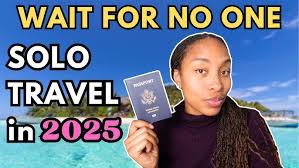Common Pitfalls in Marriage Visa Applications and How to Steer Clear.
Navigating the maze of marriage visa applications can be a daunting process, even for the most well-prepared couples. The promise of reuniting with your loved one often comes with a host of challenges that can derail an otherwise straightforward application. In this comprehensive guide, we explore common pitfalls in marriage visa applications, examine the reasons behind these frequent errors, and provide actionable strategies to help you steer clear of these obstacles. Whether you are just beginning your application or looking for ways to refine your submission, this article offers insights drawn from real-world experiences and expert recommendations.
Understanding the Basics of Marriage Visa Applications
A marriage visa is not merely about submitting paperwork; it represents a careful balancing act of legal requirements, personal narratives, and financial documentation. The immigration authorities scrutinize every detail to detect any discrepancies or fraudulent intent. Without a solid understanding of the process, couples may inadvertently leave out crucial documents or provide inconsistent information. This section sheds light on the basic requirements and common errors encountered in the early stages of the application process.
Results
#1. What type of part-time job would you like to do?
#2. Are you open to relocating for work or studies?
#3. How much would you like to earn per hour?
#4. Do you have a visa for your destination country?
#5. Do you prefer working remotely or in an office setting?
#6. What type of scholarship are you looking for?
#7. What is your gender?
The application typically begins with gathering an array of documents such as birth certificates, passports, and, most importantly, marriage certificates. A key insight here is that even the smallest inconsistency can lead to prolonged delays or even a rejection. It is essential to double-check every detail on these documents and ensure that all translations and notarizations are performed correctly. In doing so, you prevent any potential gaps in the evidence you present.
For instance, while assembling your documentation, you might come across online resources that offer guidance on proper documentation. One such resource is Essential Documentation for Marriage-Based Visas Worldwide, which outlines the comprehensive requirements needed to create a robust application package. Integrating this level of thoroughness from the beginning sets the foundation for a successful application.
Pitfall 1: Incomplete or Inaccurate Documentation
One of the most common pitfalls in marriage visa applications is the submission of incomplete or inaccurate documentation. In the rush to meet deadlines, many applicants overlook the importance of accuracy, resulting in missing signatures, incorrect dates, or improperly notarized documents. These errors not only delay processing but can also trigger suspicions about the legitimacy of the marriage.
The application process requires that every submitted document be consistent and verifiable. Details such as names, dates, and personal information must match across all documents. When inconsistencies arise, consular officers may request additional evidence or schedule follow-up interviews, further delaying the process.
Another common mistake is neglecting to include supplementary evidence that supports the authenticity of your relationship. Photographs, travel itineraries, and joint financial records can all serve as additional proof that your marriage is genuine. A perfect example of ensuring a strong, consistent narrative is found in Avoiding Marriage Fraud Accusations in Your Immigration Application, where applicants learn how to reinforce the integrity of their documents by providing contextual evidence. Incorporating such insights can make a significant difference in the outcome of your application.
To help you stay organized, consider using a checklist to ensure that every document is verified and up-to-date before submission. This simple step can save you considerable time and prevent future hassles. Moreover, involving an immigration consultant to review your application may highlight mistakes that you might otherwise miss, ensuring that all aspects of your documentation are thoroughly vetted.
Pitfall 2: Poor Organization of Evidence
When submitting a marriage visa application, the organization of your evidence plays a crucial role. Immigration officials must be able to quickly and easily verify the authenticity of your claims. If your documents are scattered, poorly labeled, or not presented in a logical order, this can raise red flags. A well-organized application not only speeds up the review process but also demonstrates your commitment to transparency and accuracy.
Imagine having multiple stacks of documents with no clear sequence or reference. This lack of organization can lead to frustration, both on your part and that of the reviewing officer. Each document should be clearly marked and accompanied by an index or summary that outlines its relevance. Digital copies should also be prepared in the required format, and hard copies should be neatly bound if requested.
While preparing your application, it is helpful to think of your evidence as telling the story of your relationship. A chronological arrangement of photographs, travel receipts, and joint financial statements can weave a compelling narrative. To add depth to your submission, you might consider reading about Navigating the Marriage-Based Green Card Interview, where practical advice is provided on how to maintain consistency between your written application and personal testimony during the interview process. This insight reinforces the importance of a well-organized application that aligns with your personal story.
A recommended strategy is to create separate folders for different types of documents, labeling them clearly according to the type of evidence they provide. This method not only streamlines the review process but also minimizes the risk of leaving out critical information. Organization is the backbone of a strong application, and dedicating time to this step can mitigate many of the pitfalls associated with a disorganized submission.
Pitfall 3: Financial Documentation Errors
Financial documentation is a cornerstone of marriage visa applications. Immigration authorities need to be convinced that the sponsoring party can financially support the applicant without resorting to public funds. Errors in financial documents, such as bank statements, employment letters, or tax returns, can result in significant delays or even denials.
One major issue is the failure to provide clear and verifiable evidence of financial stability. This includes not only current bank balances but also historical financial data that demonstrates consistency and reliability over time. It is vital to ensure that all figures, dates, and signatures are accurate and reflect your true financial situation. Omitting this level of detail can be a fatal mistake in your application.
Many applicants overlook the importance of integrating supplementary evidence, such as joint financial commitments and co-signed loans. To strengthen your financial credibility, it is beneficial to present a diverse portfolio of financial documents. An excellent reference point for financial clarity is Financial Sponsorship Requirements for Spousal Visa, which provides a detailed overview of the expectations and standards required by immigration authorities. Using such resources can help you ensure that every financial detail is in perfect order.
When preparing financial documentation, consider the following steps:
- Ensure that all documents are current and reflect your latest financial position.
- Provide official copies of bank statements, employment letters, and tax returns.
- If possible, include a letter of support or evidence of joint financial responsibility.
This careful attention to detail demonstrates financial responsibility and reassures immigration officials that you have a stable economic foundation. It is often the difference between a successful visa application and one that is mired in delays or denials.
Pitfall 4: Inadequate Personal Testimonies and Supporting Statements
While hard documents are essential, personal testimonies and supporting statements form the emotional core of your marriage visa application. These narratives provide context and depth to your relationship, offering insight beyond what can be gleaned from official records. However, relying solely on generic or incomplete statements can weaken your application.
Support letters from friends, family members, and community leaders should be specific, detailed, and personalized. They need to capture the essence of your relationship and provide tangible examples of your shared life. Vague or overly formal letters that do not convey genuine familiarity with the couple may not suffice. Instead, focus on crafting statements that reflect your unique journey as a couple.
For example, discussing memorable experiences, shared challenges, and the ways you support each other can enrich your application. Such personalized narratives help build a vivid picture of your relationship for the immigration officer. To better understand the interview process, consider insights from Navigating the Marriage-Based Green Card Interview. This resource highlights the importance of aligning your personal testimony with the evidence provided, ensuring a consistent and compelling case.
It is equally important to involve individuals who have firsthand knowledge of your relationship. Their statements should be corroborated by other pieces of evidence, such as photographs and joint financial records. When these narratives are intertwined with clear, factual documentation, they create a powerful testimony of the authenticity of your union.
Organizing these personal testimonies in a coherent manner can set your application apart. A well-thought-out narrative, supported by concrete evidence, ensures that the human aspect of your application resonates with decision-makers. This holistic approach is essential in crafting a marriage visa application that is both credible and heartening.
Pitfall 5: Overlooking the Nuances of Legal and Procedural Requirements
Every country has its own set of legal and procedural requirements that govern marriage visa applications. Overlooking these nuances can lead to significant setbacks. Applicants often assume that the process is standardized across different regions, but each jurisdiction may have unique expectations and protocols.
For instance, certain countries may require additional affidavits, specific forms of certification, or even in-person interviews that are not part of the standard process elsewhere. Failing to account for these differences can result in incomplete or delayed submissions. It is imperative to research the specific requirements of the country where you are applying and adjust your documentation accordingly.
In some cases, applicants might benefit from reading about Conditional Residency Through Marriage: Steps to Remove Conditions Successfully to understand the additional hurdles that might come into play post-approval. While this topic focuses on a later stage of the application process, it underscores the importance of being thorough and compliant with every legal requirement from the outset.
A careful review of procedural guidelines provided by the respective immigration authorities is non-negotiable. This includes checking for any updates or changes in policies that might affect your application. Creating a timeline for each requirement and marking critical deadlines can help ensure that nothing is overlooked. By staying informed and proactive, you can avoid common procedural pitfalls that often derail promising applications.
Pitfall 6: Failing to Plan for Interview and Post-Submission Follow-Up
Even after submitting a meticulously prepared application, the process does not end. The visa interview and subsequent follow-up requests from immigration authorities can be equally challenging. Many applicants fall into the trap of assuming that submission is the final step, only to be caught off guard by rigorous follow-up interviews or requests for additional documentation.
Preparing for the interview is as crucial as preparing the written application. During this stage, immigration officers may probe for inconsistencies or ask for clarifications on parts of your submission. A successful interview requires a clear understanding of your entire application and the ability to articulate your shared history confidently. Being unprepared or anxious can lead to miscommunication and, ultimately, a negative outcome.
To better prepare, consider studying guides like Navigating the Marriage-Based Green Card Interview for effective interview strategies. Practicing mock interviews with a trusted friend or immigration expert can also help you feel more at ease when the actual interview takes place.
It is also important to plan for post-submission follow-up. Sometimes, immigration authorities may request further evidence or clarifications well after the interview is concluded. Maintaining organized copies of all submitted documents and being ready to provide additional information at short notice can greatly expedite the resolution of any issues that arise during this phase.
A proactive approach in this stage can be the key differentiator between a smooth process and one fraught with delays. Clear communication, accurate documentation, and preparation for unforeseen follow-ups are essential components of a successful marriage visa application.
Pitfall 7: Ignoring Changes in Immigration Policies
Immigration policies are dynamic and subject to frequent changes that can directly impact the criteria and requirements for marriage visa applications. Ignoring these changes is a risk not worth taking. Applicants who base their submissions on outdated guidelines may find that their documentation no longer meets current standards.
Staying updated on policy changes is crucial throughout the application process. Government websites, official updates, and reputable immigration forums are valuable resources for the latest information. Being proactive by subscribing to relevant newsletters or alerts can save you from potential pitfalls due to sudden regulatory changes.
For additional context on evolving immigration trends, you might explore resources such as Fiancé(e) Visa vs. Spousal Visa: Which Path is Right for Your Journey to the USA?. This discussion, while focused on visa choice, underscores the importance of understanding the latest policy landscape and making informed decisions based on current regulations.
Regularly reviewing and updating your documentation in light of these changes ensures that your application remains compliant. Flexibility and adaptability are key in a regulatory environment that is ever-changing. By keeping abreast of policy updates, you not only avoid common pitfalls but also demonstrate a proactive and informed approach to your immigration journey.
Inserting Practical Tables for Quick Reference
To enhance your understanding and provide quick reference tools, here are three tables that summarize key aspects of the marriage visa application process. These tables cover documentation pitfalls, job-related opportunities for visa sponsorship, and additional resources related to marriage visa applications.
Table 1: Common Documentation Pitfalls and How to Avoid Them
| Pitfall | How to Avoid It |
|---|---|
| Incomplete Documents | Create a comprehensive checklist and verify every document is signed, dated, and notarized as needed. |
| Inconsistent Information | Cross-check all personal details across documents for consistency. |
| Poor Organization | Arrange documents in chronological order and label folders clearly. |
| Outdated Financial Records | Provide current bank statements and financial evidence with clear timelines. |
| Insufficient Proof of Relationship | Include supplementary evidence such as joint financial records and personal testimonies. |
Table 2: Visa Sponsorship Job Opportunities
| Job Position | Salary Expectation (USD) |
|---|---|
| Securing Visa Sponsorship for International Internships | $50,000 – $65,000 |
| Finding Part-Time Work Opportunities While on a Student Visa | $25,000 – $35,000 |
Table 3: Additional Resources for Marriage Visa Applications
| Resource Topic | Focus Area |
|---|---|
| Conditional Residency Through Marriage: Steps to Remove Conditions Successfully | Addressing post-approval conditions |
| Impact of Separation/Divorce on Your Marriage-Based Immigration Status | Consequences of relationship dissolution |
| Same-Sex Marriage Immigration: Visa Options and Global Recognition | Options for same-sex marriage applicants |
| Bringing Dependent Children Through Marriage-Based Immigration | Process for including dependent children |
Pitfall 8: Overreliance on Generic Advice and Templates
Every marriage visa application is unique, reflecting the distinct journey of the couple involved. However, many applicants make the mistake of relying too heavily on generic advice or using standard templates without tailoring them to their specific situation. While templates can serve as a useful starting point, a one-size-fits-all approach rarely captures the nuances of a genuine relationship.
Generic advice often fails to address the subtle yet critical aspects that can make your application stand out. Personalizing your application with detailed narratives, customized supporting letters, and unique evidence of your relationship can help differentiate your submission from others. It is essential to interpret generic guidelines in the context of your unique circumstances rather than following them verbatim.
A thoughtful approach involves researching multiple sources and combining insights to create a bespoke application that reflects your true relationship. In this regard, looking into Essential Documentation for Marriage-Based Visas Worldwide can provide a baseline, but then customize the guidelines based on your personal experiences. This personalized approach not only strengthens your application but also minimizes the risk of rejection due to perceived standardization.
Tailor every part of your application by highlighting unique aspects of your relationship. Whether it’s a special way you met, the challenges you overcame together, or the shared vision you have for the future, ensure that these elements are woven into your documentation and supporting statements. This level of detail can turn a generic application into a compelling narrative that resonates with immigration officers.
Pitfall 9: Lack of Professional Guidance
One of the most critical yet overlooked pitfalls in marriage visa applications is the absence of professional advice. While many couples attempt to navigate the process on their own, complex legal and procedural details can easily be misinterpreted, leading to costly mistakes. Relying solely on online resources without the input of experienced professionals can leave gaps in your application that may not be immediately apparent.
Engaging with an immigration consultant or attorney who specializes in marriage visas can be a game-changer. These professionals provide tailored advice based on the most recent regulatory updates and can help identify potential issues before they become major obstacles. This proactive approach ensures that every element of your application is carefully scrutinized, reducing the likelihood of errors.
For instance, some couples might not realize the importance of aligning their financial documents with strict guidelines unless they consult with a professional. Additionally, the personalized feedback from an expert can help refine your personal testimonies and improve the overall coherence of your application. The insights gleaned from Fiancé(e) Visa vs. Spousal Visa: Which Path is Right for Your Journey to the USA? can be particularly useful in making an informed decision regarding the type of visa and ensuring that your application strategy aligns with your long-term goals.
Although professional guidance comes with a cost, the benefits often outweigh the financial investment. The peace of mind that comes from knowing your application is in expert hands can alleviate much of the stress associated with the visa process. Moreover, avoiding even a single mistake could mean the difference between approval and a lengthy, expensive reapplication process.
Pitfall 10: Ignoring Post-Approval Conditions
Even after overcoming the numerous hurdles of the application process and receiving visa approval, the journey is not completely over. Many couples neglect to plan for the conditions attached to their visa approvals. These post-approval conditions can include additional documentation submissions, interviews, or even the removal of conditional residency requirements within a set timeframe.
Failing to adhere to these post-approval conditions can result in severe consequences, including the loss of residency rights and other legal complications. It is essential to understand that receiving an approval is not an end in itself but a milestone in a longer immigration journey. Preparation must extend beyond the application to include a clear plan for fulfilling any subsequent requirements.
Staying informed about all post-approval conditions is crucial. Regularly reviewing updates from immigration authorities and maintaining consistent communication with your legal advisor will help ensure that you meet all obligations in a timely manner. This diligence not only protects your immigration status but also reinforces the legitimacy of your relationship.
Developing a timeline and checklist for post-approval requirements can be a practical step towards smooth transition. Consider establishing reminders for critical dates and setting aside the necessary documents well in advance. This level of preparedness is instrumental in avoiding potential pitfalls that could jeopardize your newly obtained status.
Conclusion: Strategies for a Smooth Marriage Visa Journey
Navigating the complex landscape of marriage visa applications requires a careful, multi-faceted approach. From the initial gathering of documentation to the final post-approval conditions, each step is fraught with potential pitfalls that can be avoided with careful planning and attention to detail. By understanding the common errors—from incomplete documentation and poor organization to financial errors and lack of professional guidance—you can proactively steer clear of the challenges that often derail this journey.
A successful application hinges on the ability to present a clear, consistent, and compelling narrative that is supported by robust, verifiable evidence. Whether you are just beginning the process or are in the final stages of submission, remember that thorough preparation, attention to detail, and professional support are key components in overcoming these challenges. The information and strategies presented in this article are designed to empower you with the tools and insights necessary to create a strong, persuasive application that stands out from the rest.
By integrating personalized narratives, leveraging comprehensive checklists, and making use of expert online resources like Conditional Residency Through Marriage: Steps to Remove Conditions Successfully and Impact of Separation/Divorce on Your Marriage-Based Immigration Status, you can build an application that not only meets but exceeds the stringent demands of immigration authorities. Each step of this journey, from documentation to the interview and post-approval procedures, presents an opportunity to affirm the authenticity of your relationship and your commitment to a shared future.
The road to a successful marriage visa application may be challenging, but with the right approach and an informed strategy, you can overcome any obstacles. The key is to remain proactive, organized, and resilient, always prepared for the unexpected. With a solid plan in place and a clear understanding of the pitfalls to avoid, you will be well-equipped to navigate this complex process and move one step closer to reuniting your family in your new home.
This article serves as a detailed roadmap for anyone embarking on the marriage visa journey. By staying aware of the common pitfalls and integrating effective strategies to address them, you lay the groundwork for a successful application. Remember, every detail matters—from the clarity of your documents to the precision of your personal narratives. With dedication and proper planning, you can transform a challenging process into a smooth, well-managed transition towards your future together.
Ultimately, the goal of your marriage visa application is to tell a genuine story of love and commitment. Let your documentation, financial records, and personal testimonies all work together to create a compelling narrative that leaves no room for doubt. Armed with the insights provided in this guide and the practical tools from the tables above, you can confidently navigate the process, avoid common pitfalls, and steer clear of the challenges that so often lead to delays and frustrations.
May this guide be the first step towards a seamless, successful marriage visa application, ensuring that nothing stands between you and a new beginning with your loved one.









